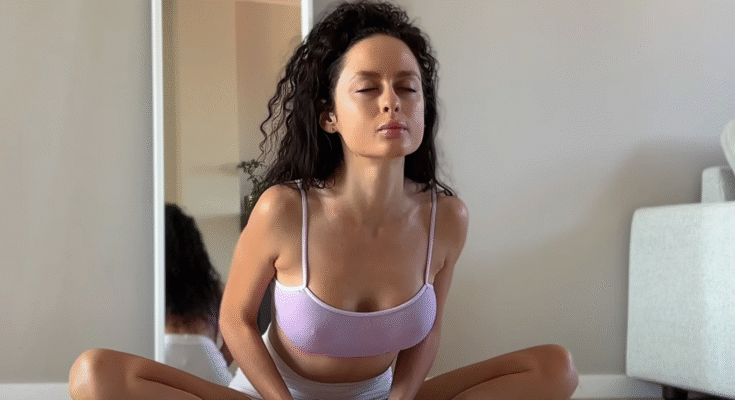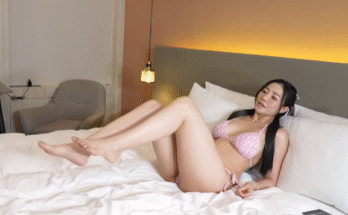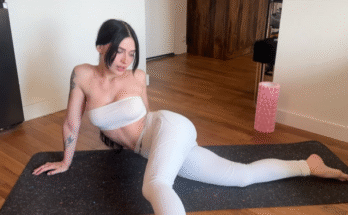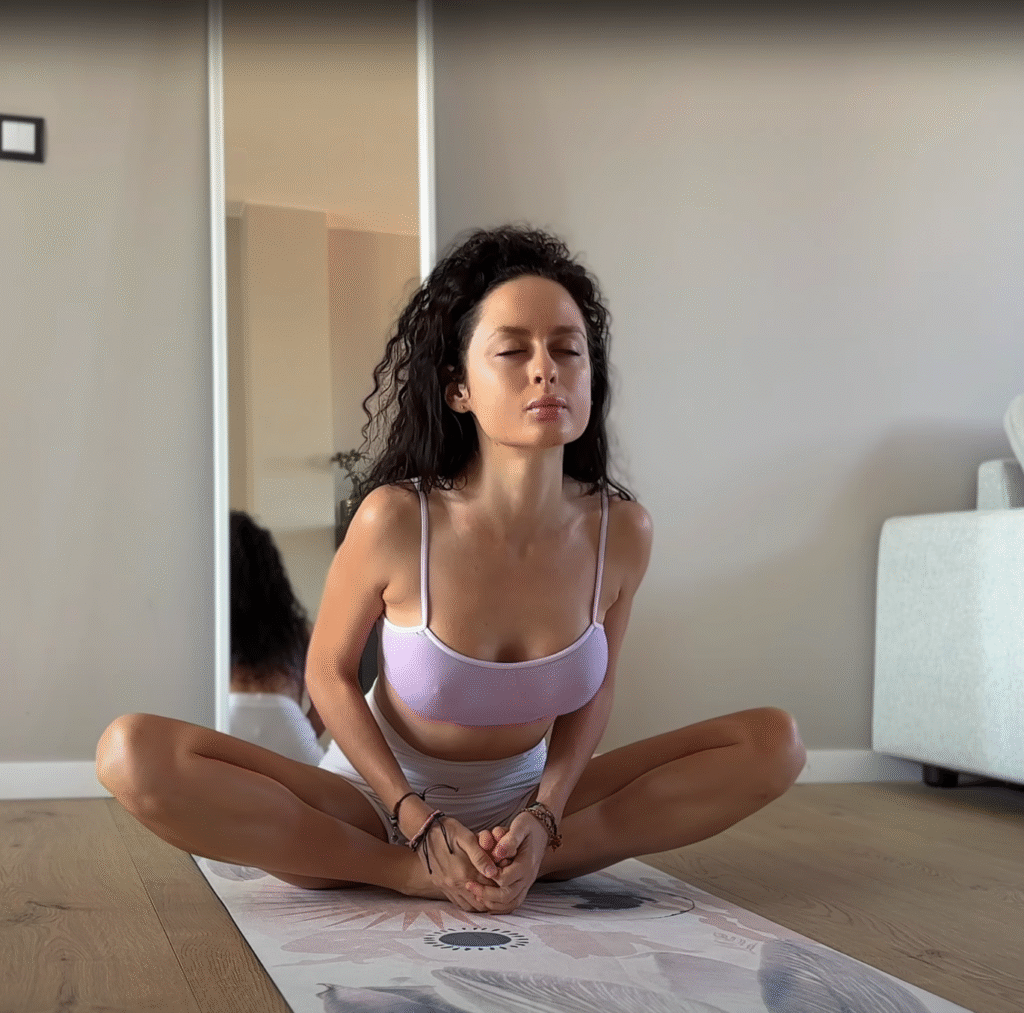
In a world that moves faster every day, finding a moment to simply breathe can feel like a luxury. Yet, the beauty of yoga lies in its ability to slow us down—to bring awareness to the body, calm to the mind, and balance to the spirit. “Relaxing Yoga for Beginners” is more than just a workout routine; it’s a doorway to peace, self-care, and gentle transformation. Whether you’re stepping onto your mat for the first time or returning after a long break, this practice invites you to relax, release tension, and reconnect with yourself.
The Essence of Relaxing Yoga
Yoga, at its heart, is not about perfection or flexibility—it’s about presence. Relaxing yoga focuses on slow, mindful movements that soothe the nervous system and nurture the body. Instead of pushing into deep stretches or complicated postures, the goal is to explore comfort, stillness, and breath.
For beginners, this style of yoga is the perfect introduction. It emphasizes simplicity and awareness rather than intensity. Through calm breathing, gentle stretches, and mindful rest, the body begins to open naturally, without force. Every inhale becomes an invitation to lengthen and expand, and every exhale allows you to let go of stress and tightness.
Setting the Scene for Relaxation
Before beginning, create an environment that supports calmness. Choose a quiet space where you won’t be disturbed for at least 20–30 minutes. Dim the lights or practice near a window where natural sunlight can softly illuminate your space. Roll out your yoga mat, and if you have props like a yoga block, bolster, or blanket, keep them nearby.
Soft background music or the gentle sounds of nature can enhance your experience. Some practitioners also light candles or burn incense to deepen the sense of tranquility. The atmosphere doesn’t need to be perfect—it simply needs to feel safe, warm, and peaceful.
Begin with Breath Awareness
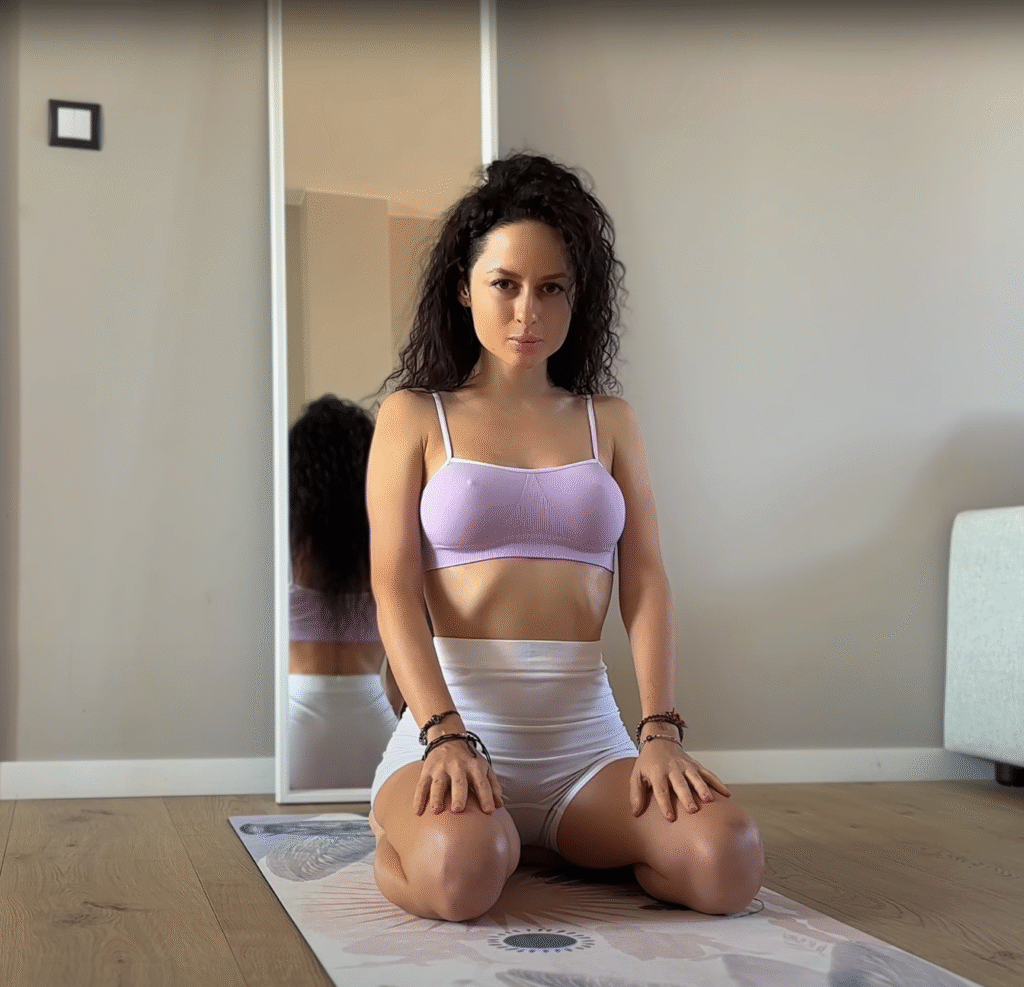
Start your relaxing yoga session by sitting comfortably—either cross-legged on the floor or on a cushion. Close your eyes, rest your hands on your knees, and bring your attention to your breath.
Take a deep inhale through your nose, feeling your belly rise. Then exhale slowly through your mouth, letting your shoulders drop. Continue this for several rounds, each time breathing a little deeper and slower.
Breathing is the foundation of yoga. It connects body and mind, grounding you in the present. As you breathe, notice how your body begins to soften and your thoughts start to settle. This simple act of mindful breathing can instantly calm the nervous system and prepare you for the gentle movements ahead.
Gentle Warm-Up
Once you feel centered, begin warming up your body with small, slow movements:
- Neck Rolls: Lower your chin to your chest and slowly roll your head in a circular motion. Move gently, feeling each stretch along your neck and shoulders. Reverse the direction after a few rounds.
- Shoulder Rolls: Lift your shoulders up toward your ears and roll them back, opening the chest. Repeat several times, then reverse the direction.
- Cat-Cow Stretch: Come onto your hands and knees. Inhale as you arch your back and lift your gaze (Cow Pose). Exhale as you round your spine and tuck your chin (Cat Pose). Flow with your breath for 5–10 rounds, awakening the spine and releasing tension.
These simple movements encourage blood flow, loosen stiff muscles, and create a sense of ease throughout the body.
Flow into Relaxing Postures
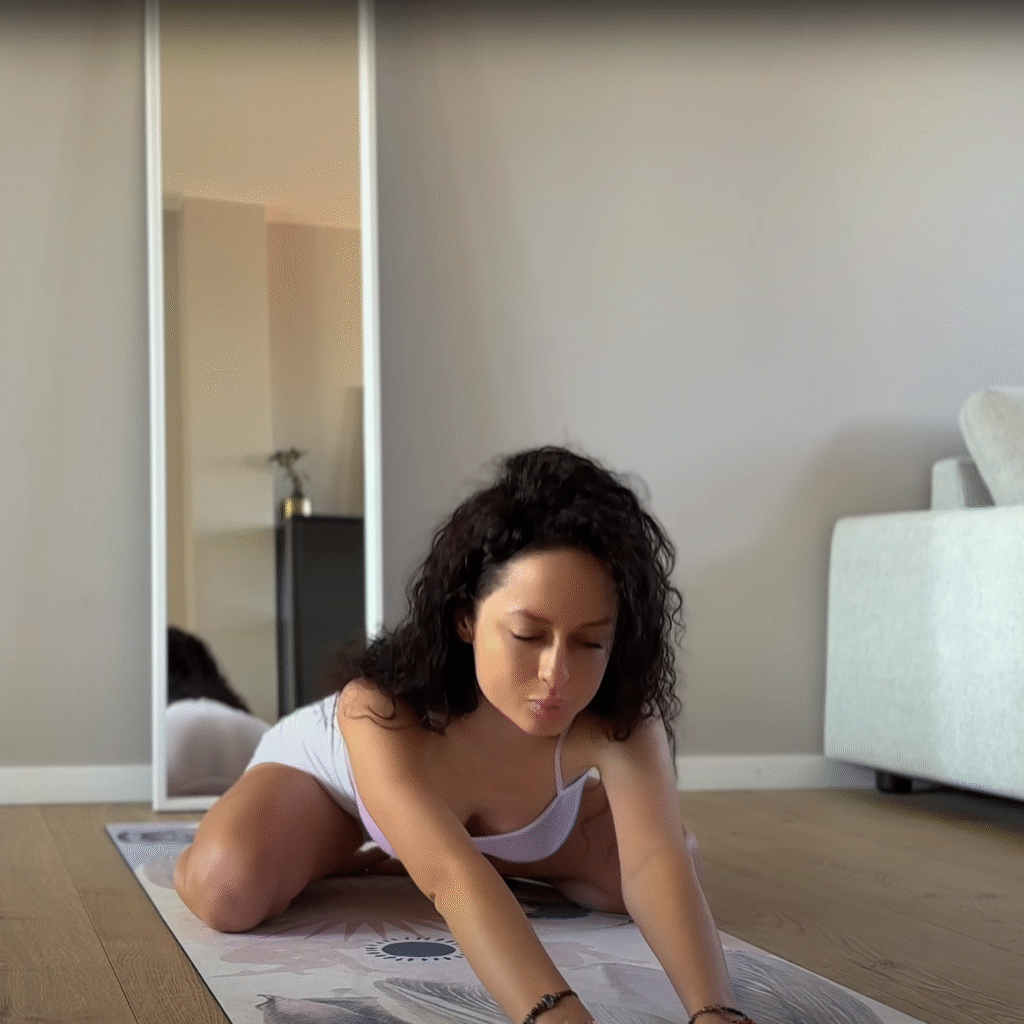
After warming up, move into a sequence of easy, restorative poses designed for deep relaxation:
- Child’s Pose (Balasana): From hands and knees, bring your big toes together and sit your hips back toward your heels. Stretch your arms forward, resting your forehead on the mat. Allow your entire body to surrender. Breathe deeply, feeling your back expand with each inhale. Stay for 1–2 minutes.
- Seated Forward Fold (Paschimottanasana): Sit with legs extended straight in front of you. Inhale to lengthen your spine; exhale and gently fold forward, reaching toward your toes or resting your hands on your shins. This posture stretches the hamstrings and calms the mind.
- Supine Twist: Lie down on your back. Bring your knees to your chest, then drop them to one side while extending your arms out in a “T” shape. Turn your gaze to the opposite side. Feel your lower back release. Hold for 1 minute on each side.
- Legs-Up-the-Wall Pose (Viparita Karani): Sit close to a wall and gently swing your legs up while lying back. Rest your arms beside you, palms up. This rejuvenating pose promotes relaxation, improves circulation, and soothes tired legs. Stay for 5–10 minutes, breathing slowly.
- Savasana (Corpse Pose): End your session by lying flat on your back with your legs extended and arms relaxed at your sides. Close your eyes. Let go completely—no effort, no control, just rest. Stay here for 5–10 minutes, allowing your body to absorb the benefits of the practice.
The Role of Mindfulness
Relaxing yoga for beginners isn’t only about physical postures—it’s about developing mindfulness. As you move through each pose, notice how your body feels. Are your muscles tense or relaxed? Is your breathing shallow or deep? This awareness creates a bridge between the body and the mind.
When thoughts arise, acknowledge them without judgment and gently bring your focus back to your breath. This simple act of returning builds inner peace and helps train your mind to stay calm in daily life. Over time, mindfulness on the mat translates into mindfulness off the mat—helping you respond to stress with grace and clarity.
The Benefits of Relaxing Yoga
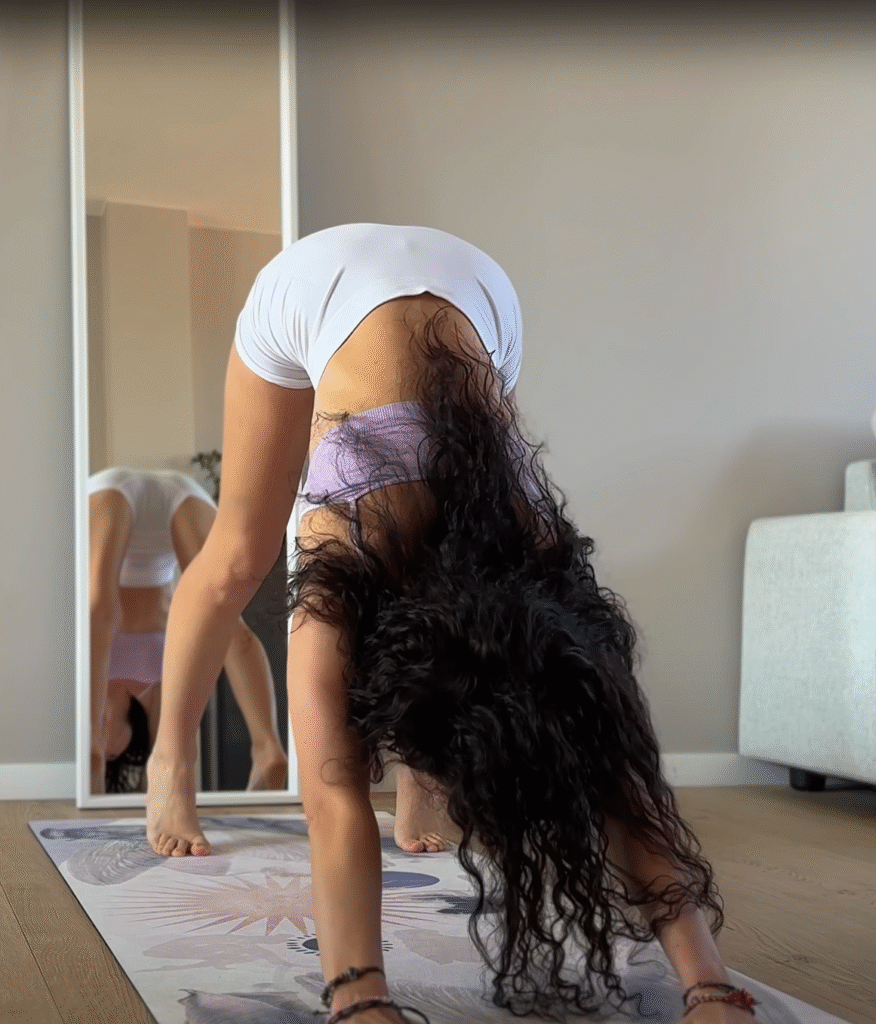
Regular practice of relaxing yoga can bring a wide range of benefits, especially for beginners who are learning to tune into their bodies:
- Stress relief: Slow, conscious breathing activates the parasympathetic nervous system, lowering stress hormones and creating a state of calm.
- Improved flexibility: Gentle stretching gradually increases mobility in the muscles and joints without strain.
- Better posture and alignment: Awareness of body positioning helps reduce tension in the neck, shoulders, and back.
- Enhanced sleep quality: The relaxation techniques practiced in yoga can lead to deeper, more restful sleep.
- Emotional balance: Yoga encourages emotional release, helping to clear mental clutter and cultivate positivity.
- Mind-body connection: By focusing on breath and movement, you develop a deeper understanding of your body’s needs and signals.
Building a Consistent Practice
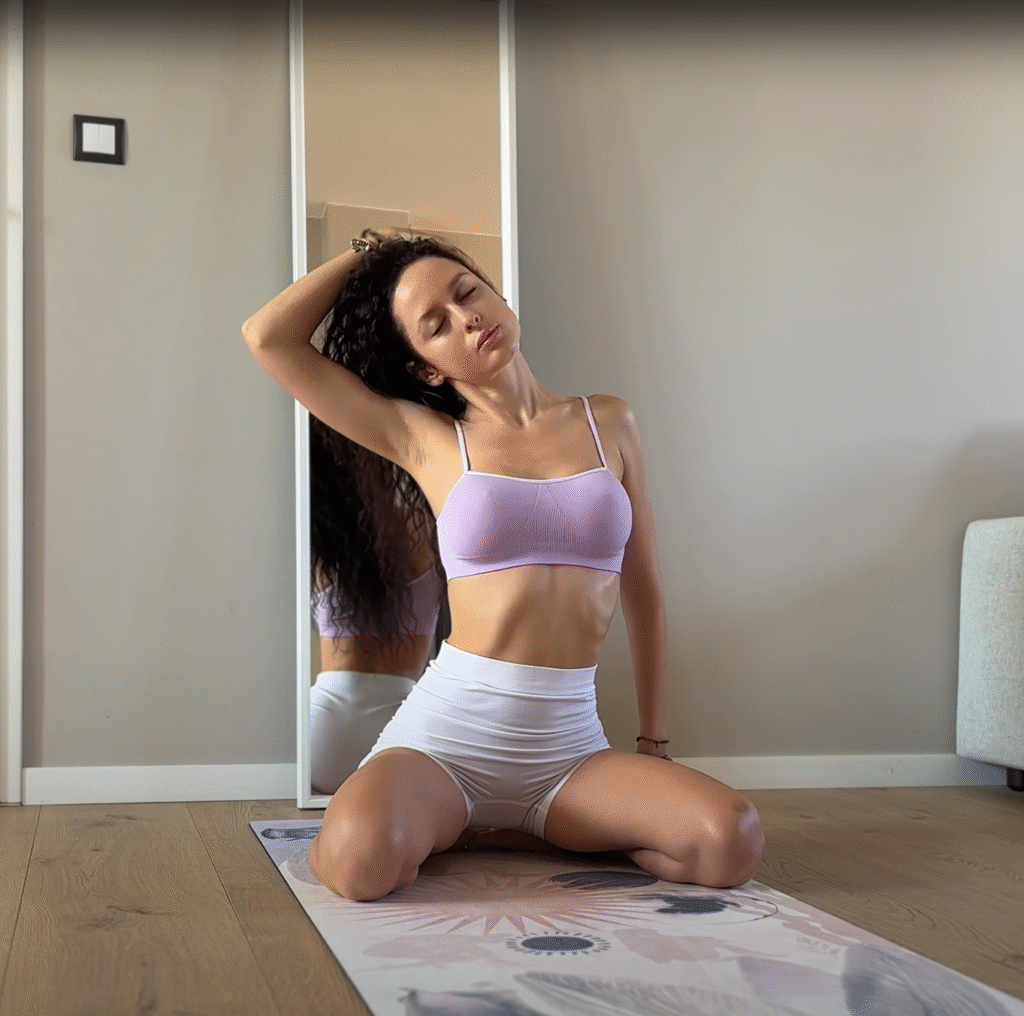
Consistency is more important than intensity. Aim to practice 10–20 minutes a day, or at least several times a week. Even short sessions can make a big difference. Try setting a regular time—perhaps early in the morning or before bed—to create a soothing routine.
You don’t need fancy equipment or extreme flexibility to benefit from yoga. What matters is your willingness to show up and breathe. With time, your body will grow stronger and more supple, and your mind will become calmer and more focused.
A Journey, Not a Destination
Remember, yoga is a lifelong journey, not a destination. Each time you step onto your mat, you have a chance to begin again—to meet yourself with kindness, patience, and curiosity. Progress in yoga isn’t measured by how far you can stretch or how long you can hold a pose, but by how present you can be in each moment.
So take a deep breath, soften your shoulders, and allow yourself to relax fully into the practice. With each session, you’ll find that yoga not only stretches your muscles but also opens your heart and quiets your mind.
In the gentle rhythm of relaxing yoga for beginners, peace becomes not just a fleeting feeling—but a way of life. 🌿🧘♀️
